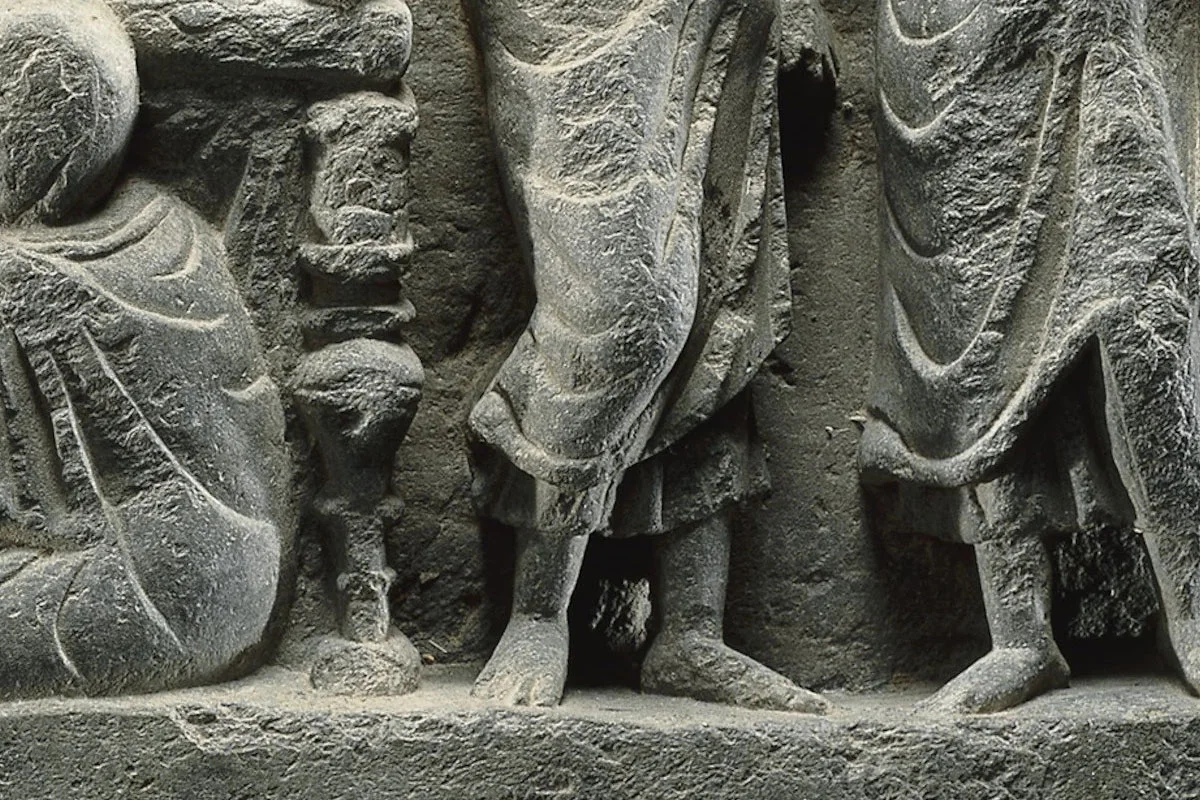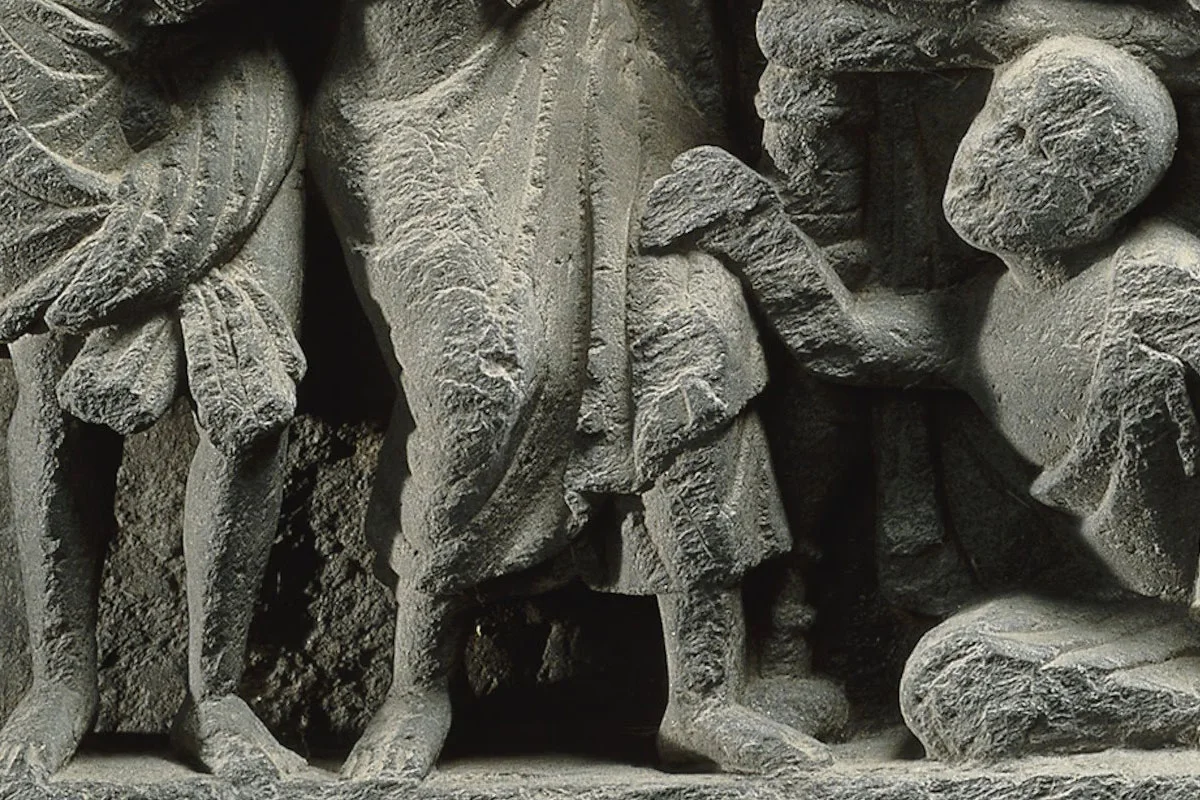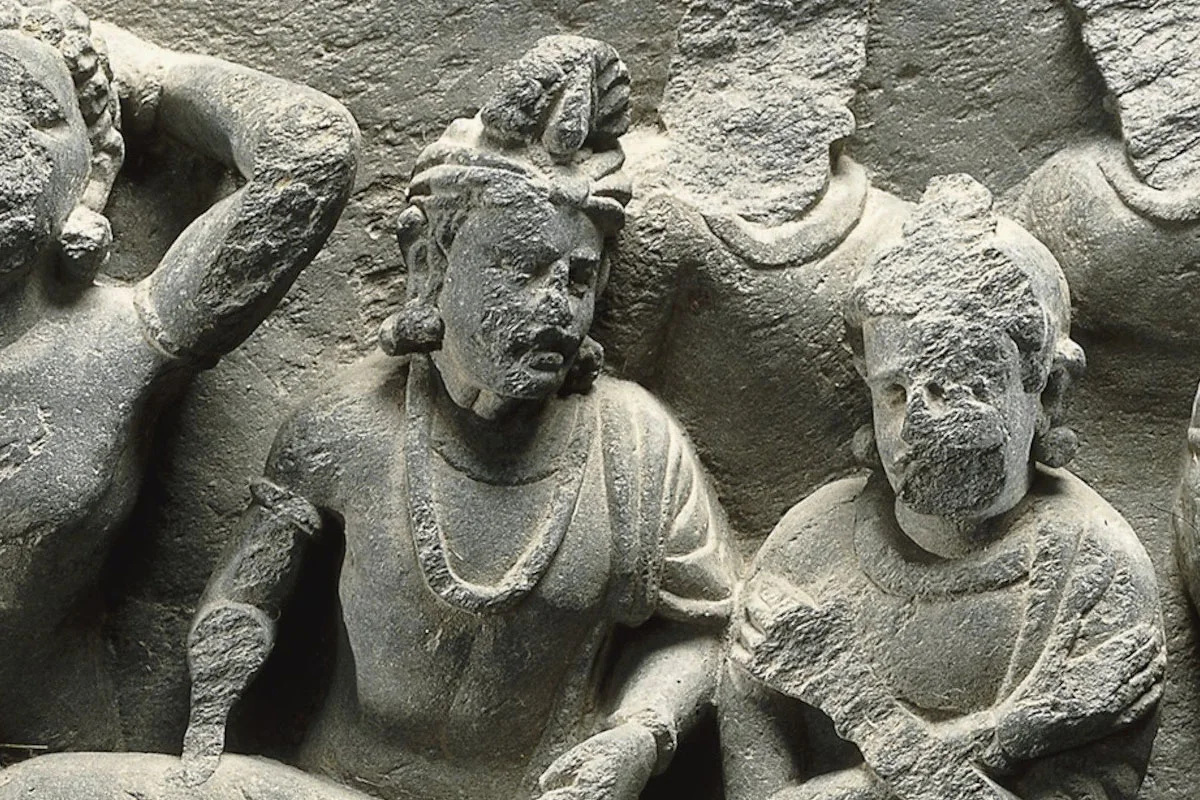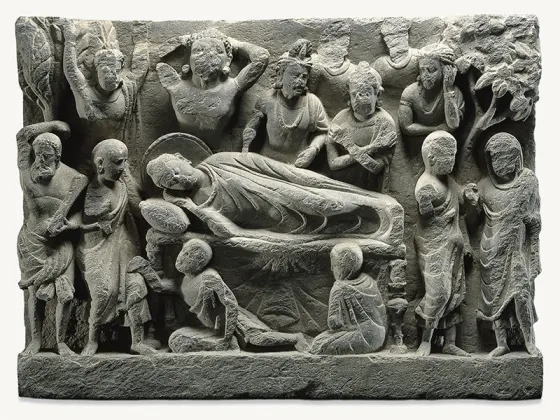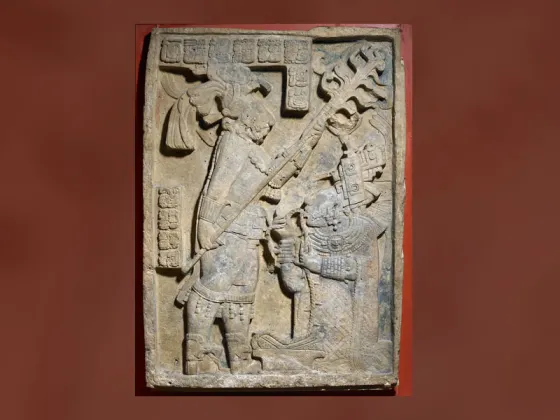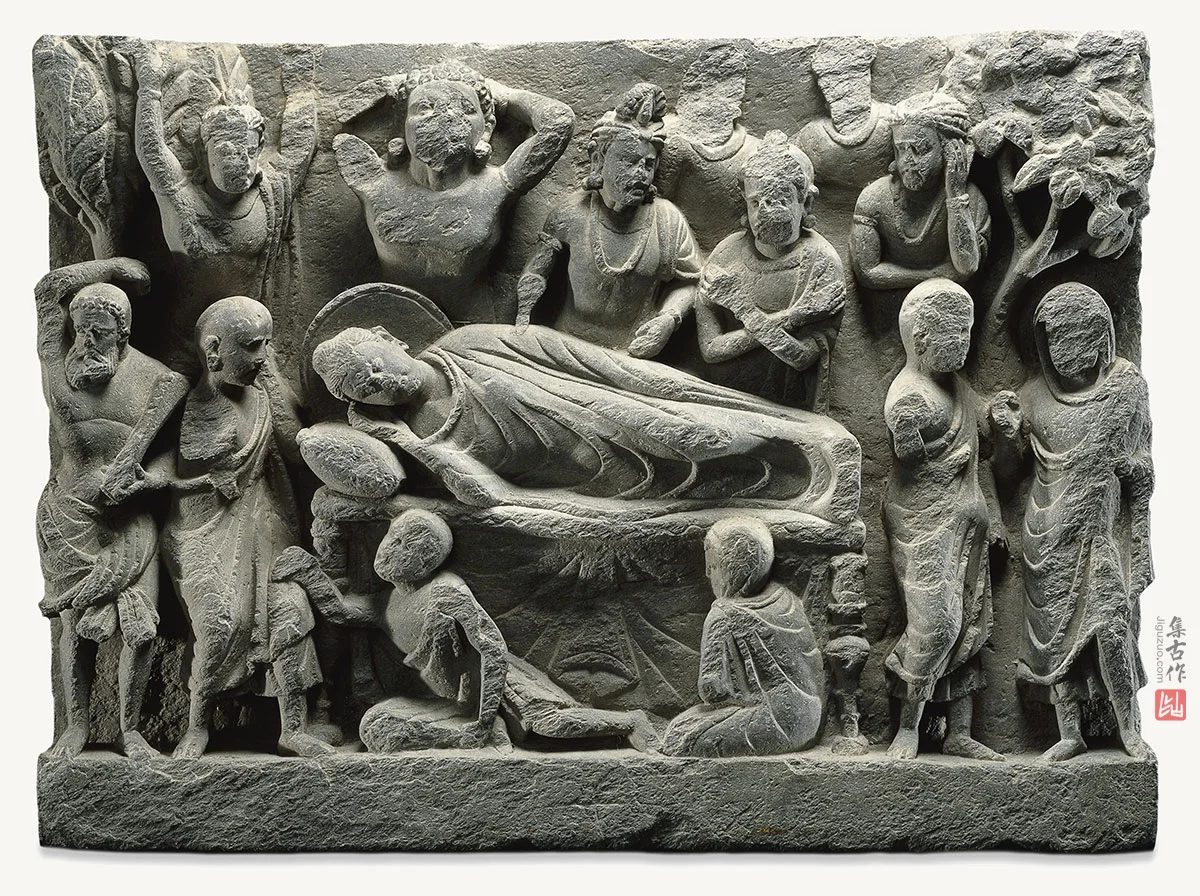
高清大图局部细节 / DETAILS
作品简介
——这一主题在许多佛教雕塑中都有体现。这种特殊的浮雕展示了他的肉身从这个世界的过去,称为摩诃涅槃,或超越涅槃的伟大境界。佛陀的形象被处理得相当正面。覆盖他身体的长袍有规则的曲线和圆形边缘,表明窗帘的褶皱。枕头和右手轻轻支撑着他平静、光环的脸。他周围的悲伤人物包括王子、托钵僧(乞丐)和俗信徒。在他所躺的榻前,想必是比丘阿难和比丘须跋陀罗,而阿那律则站在佛头旁边。站在他旁边的那个留着胡须、赤身裸体的人可能是金刚手菩萨,佛陀的守护神。
According to Buddhist doctrine, whatever situation we are in at any one time is precisely the result of our previous actions. This principle of karma fits within the grand cycle of samsara, or the vicious cycle of birth, death and rebirth. In every birth there is suffering and it is through one's karma in a human birth that one can transcend the cycle and not be reincarnated.Correct and meritorious action should lead one to nirvana.The Buddhaachieved nirvana meditating under the Bodhitree, a subject that is represented in numerous Buddhist sculptures. This particular relief shows his physical passing from this world, called the maha-pari-nirvana, or the great state beyond nirvana.The figure of the Buddha has been treated quite frontally. The robe that covers his body has regular curves and rounded edges indicating folds of drapery. His calm, haloed face is gently supported by a pillow and his right hand. The grieving figures that surround him include princes, mendicants (beggars) and lay followers. In front of the couch on which he lies are presumably the monk Ananda and nun Subhadra, while Aniruddha stands beside the Buddha's head. The bearded figure with a bare torso standing next to him is probably Vajrapani, the Buddha's guardian spirit.


